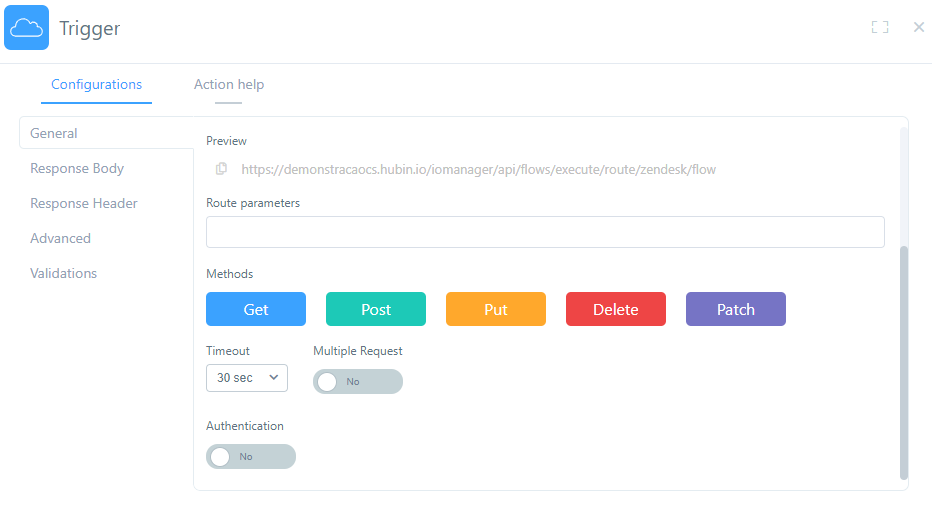API verbs in Wevo iPaaS
In the flow creation process, one of the triggers that can be used to kickstart a flow is the API trigger (see Flow creation for details). This means that when you select this option, an endpoint will be automatically generated for your flow, allowing other applications to use it to send data to be integrated.
When you create a flow with an API trigger, in the Flow Design screen, you can click on the trigger icon in order to configure information about the endpoint (see Configure or modify a trigger for details). One such configuration is which verb (method) that endpoint should accept when activated.

An API communication uses the HTTP protocol to obtain records and there are a few verbs you can choose from. They are described below:
-
GET: In a GET request, data is returned in the JSON format, along with a response status code, which will be 200 when the request is successful. This verb can be used only for reading data.
-
POST: A POST request allows the creation of new records. This means that when you use it, new data will get inserted into the endpoint. A successful utilization of the POST verb will return a status code of 201.
-
PUT: This verb is used to replace, or update, records. A successful update will return a status code of 200.
-
DELETE: A request using this verb can be used to delete a record identified by a URL.
-
PATCH: By doing a PATCH request, you'll be able to partially modify a record. The request only needs to contain the specific changes for the record's body, not the whole record.